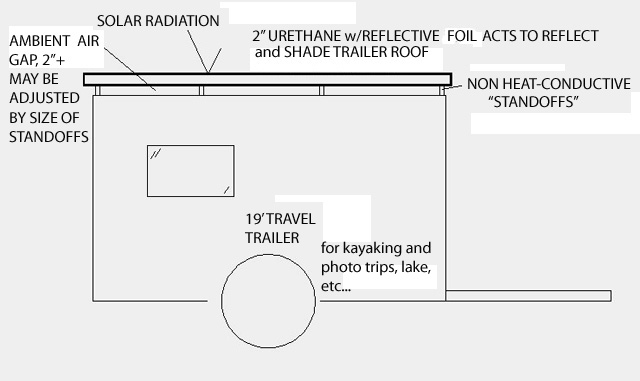~the insulation is a progressive barrier against the heat. Two, you get an equal benefit in the morning as it heats up but the thermal mass of the attic is still cool from the night. In fact, high thermal mass is generally quite helpful!
Let me try to explain what my measurements show is happening ONE more time.
The insulation is a progressive barrier, just as you mention...and each day it "heat soaks" the top side in 150deg average temps.
Each day it heats up (a lot) and cools down (very little)...and each day it retains a little more than it gives off at night...and each day the depth at which the temperature "average" is 150deg gets a little deeper toward the bottom "cold side" and the ceiling.
Because the A/C doesn't cool the ceiling AND the hot insulation's HUGE MASS down effectively, eventually the average temp of 150deg has penetrated down almost to the ceiling, and the A/C is now fighting the load of the almost completely "heat-saturated" (to 150degrees) THERMAL MASS of the insulation itself. The hot insulation itself is now trying to heat the ceiling to 150deg (not just outside ambient 105...but actually fighting an attic "OVEN" of 150+!!!). The A/C can cool the inside air of the room...but as soon as it shuts off, the HOT CEILING heats the air back up pretty quickly...and the A/C kicks back on again.
This occurance does NOT seem to be "common knowlege" at "industry standard" <cough> Home Depot, but I watched it happen over the course of a couple days last July when I almost got cooked in my own attic just pulling some golf clubs down...and got motivated to actually "track" what was REALLY happening up there.
NOT what the Home Depot/Roofing contractors THINK was happening...but what was ACTUALLY happening!
Roofing contractors (here) rarely speak English very well...let alone have a clue about thermodynamics.
First thing I did was blow some more insulation up there, to attempt to slow the exchange. (maybe a mistake as it increased the mass...)
But in further thought, what I really need is MASSIVE VENTILATION and a way to prevent the HUGE Solar
GAIN and
HEAT RETENTION in the first place.
Massive Ventilation of the attic air -AND- reflection of the solar radient heat. (and cost effectively!

)


